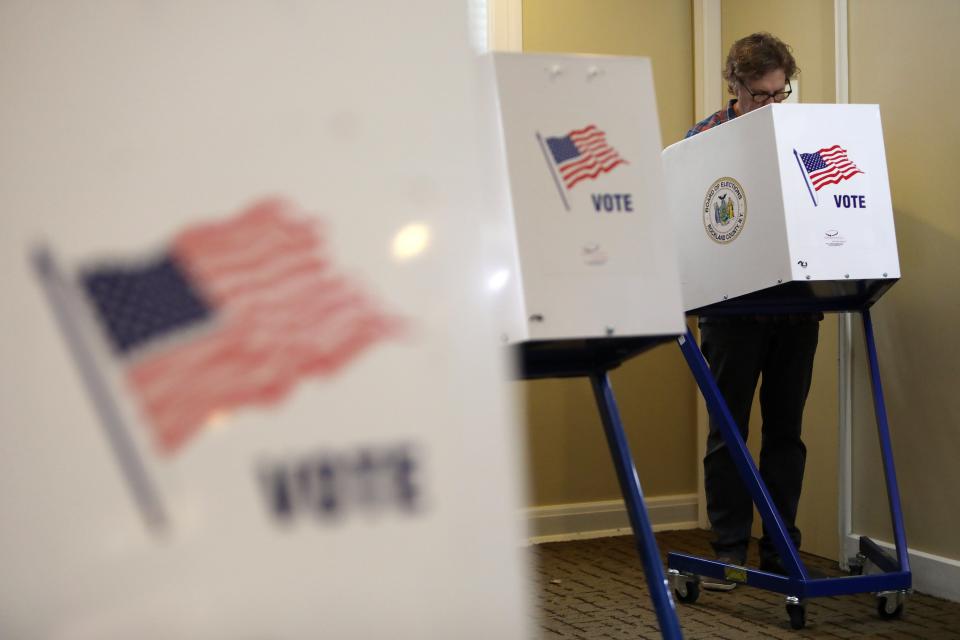School debt, sewers: What questions will NY voters answer on November ballots?
New York voters will decide on two proposed tweaks to the state constitution in November, each dealing with the amount of debt that local governments and school districts can accrue.
One proposal would remove a relic from the 1950s that set lower borrowing limits for small-city school districts like White Plains and Utica than for all other school systems. Approval by voters would end that disparity and give 57 districts more spending leeway for construction projects.
The other referendum would extend for 10 years a key exception to the debt limits for counties and municipalities. If approved, their limits would continue to exclude bond debt taken on for costly sewer projects.

Both measures are set for Nov. 7 general-election ballots after being approved by state lawmakers this year and last. Lawmakers must pass a proposed amendment in two consecutive sessions before it can be put to voters.
Neither topic is splashy, though both involve a topic close to voters' hearts: taxpayer money.
Here are the details.
Allowing small-city schools to borrow more money
Under state law, most of New York's 731 school districts can borrow up to 10% of their total taxable property value. But the small-city group is allowed only half that debt — 5% of taxable value — under a 1951 constitutional amendment.
Why the difference? At the time, small-city districts — those containing cities with fewer than 125,000 residents — were exempt from the annual school budget votes that other districts hold. A tighter debt limit was put in place as a substitute for voter involvement in spending.
That became obsolete in 1997 when New York passed a law extending budget votes to small-city districts.
But the lower debt limit remained in the constitution. That has put tighter constraints on districts such as Kingston, Batavia and Binghamton as they plan new buildings, renovations, sports fields, technology upgrades and other big projects that they pay for through bonding.
"They just have that much less flexibility, at best, when pursuing capital projects," said Brian Fessler, director of governmental relations for the New York State School Boards Association.
The impending ballot proposal would drop the 72-year-old amendment. Among the 57 districts that stand to benefit: Peekskill, New Rochelle, Rye, Port Jervis, Newburgh, Middletown, Poughkeepsie and Beacon, all in the Hudson Valley. Beneficiaries further upstate include Ithaca, Canandaigua and Geneva.
New York voters rejected the same idea 20 years ago. That 2003 referendum on lifting the constitutional debt limit for small-city districts failed by more than eight percentage points.
Building needs: East Ramapo: All schools fail state-mandated building survey; fixes could cost $500M
Greenlighting the sewer debt exclusion
For 60 years, New York has let counties and municipalities exclude from their debt limits the amounts they borrowed for sewer projects — treatment plants, pipes and equipment that are often very costly to build or replace.
That exclusion was added to the constitution in 1963 to encourage participation in a new state program to aid such projects. But it was limited to 10 years, requiring voters to renew it every 10 years since then — as they have now done five times.
This year, it's up for a sixth renewal. The last exclusion is due to expire at the end of this year.
Excluding sewer projects from debt limits creates borrowing room for counties and municipalities to tackle other capital expenses. Their limits range from 7% to 10% of taxable value under the state constitution.
Big expense: Cost estimate for Orange County sewer plant expansion jumps to $200 million. Here's why
"Local government finances continue to be strained by the need to repair or replace aging sewer instrastructure," the amendment's sponsors wrote this year in a bill memo.
Voters resoundingly approved the proposal the last time around, in 2013. It passed by more than 24 points.
Chris McKenna covers government and politics for The Journal News and USA Today Network. Reach him at cmckenna@gannett.com.
This article originally appeared on Rockland/Westchester Journal News: NY elections: What questions will be on your ballot in November?

